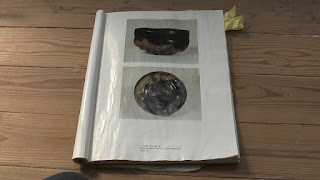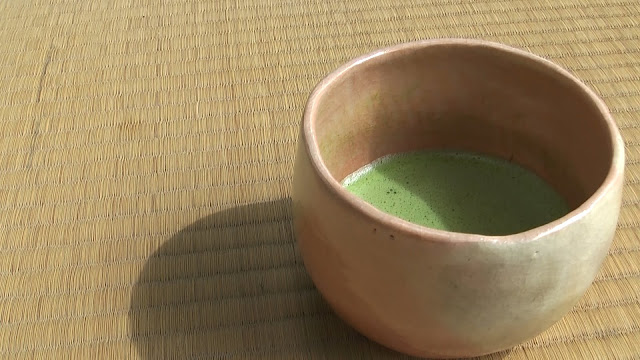Chawan lover #2 : clay and its flesh
Flame turned into earth
Ceramic lovers often have an almost « fleshy » consideration for some pieces they love and, above all, for tea bowls. That is the erotic part of the ceramic art that I would like to talk about today.
A successful ceramic piece is never exactly « cold ». It always keep a certain lukewarmness and, when it contains the very precious matcha, the piece does not burn nor disappoint. Any tea bowl that reacts in such way can be called a chawan. After this first impression, its skin can be soft or rough, its curve refined or heavy.
Here, tastes and colors can be discussed at length : but the tea bowl will always have a certain welcoming beauty. I say « welcoming » because the shape of a bowl is probably the shape of the container in itself : it cannot exactly aggress any beholder because it can only « receive », —welcome — something before giving it. And maybe because of precisely that, or maybe simply because any tea bowl has lips, but each tea bowl has its own smile, its own way to politely address us. It happened to me once to be intimidated by a tea bowl. Its stare troubled me like some women of my teenage years.
So, very often, a tea bowl is « alive », it has even something sensual. Even in its empty state, « fire which has changed its shape / [is] Hidden in the clay » as Kawai Kanjiro playfully said. And his warmness are still in it like the pain and joys are in wrinkles. For those who know a little about the firing of ceramics, each tea bowls expresses what it has lived through —where the flames spared it or where they polished it, the glowing they produced, the glazes they melted or darkened. One could almost say that a tea bowl had its own history… a love story with a flame.
Foot fetich
 |
| A good ceramic book never forgets to exhibit the foot of a tea bowl ! |
I could continue this romantic metaphor for ages but I would rather stop here : it is not uncommon that the comparison takes some odd turns. For example, I once heard that there are foot fetish…of tea bowls !
The foot of the tea bowl, also called kôdai, is a capital element of any piece : the potter set his/her signature there and the central part testifies of his/her skills. Beside, the ratio between the kôdai and the general outlines of the tea bowl can radically change everything about a piece. It only takes a foot one millimeter too high or low to make the whole piece look artificial, badly assembled or shaky. In other words : the kôdai is kind of the Cleopatra’s nose of chawans. From this point to becoming a fetish of it does not take much time.
Otogoze — metaphor of a young woman
But also, some tea bowls do invite to this sensual comparison more than others. It is the case with « Otogoze » by Hon’ami Kôetsu (1558-1637). The name speaks for itself of course. The flesh says even more about it. Otogoze has a luscious lip, generous curves, the color of a milky breast and a soft skin. Picture it in the night, on a tatami lighted by a single candle and it is not difficult to imagine where the name came from. In fact, this tea bowl has something that is almost obscene because of its too obvious name. But who would shame such a loving metaphor ? Is there any other way to really praise that tea bowl ?
I sometimes think that there are only a few basic elements at the root of any language and that all our expressions are but metaphors spinning around these elements. Hence the skin and its color, its softness and warmness that produce essential sensations that later nourish our perception of the world. Looking at Sasaki’s Otogoze, I remember this thin limit, on the nape of a Maïko (an aspiring geisha) between the white powdered part and the nude part. Maybe, to describe that tea bowl, one has to get back to the most simple elements of erotism. Maybe I just lack other words.
A touch of softness in this manly world
As a ceramist (because he was also a painter, calligrapher and poet), I always felt that Hon’ami Koetsu had something of a « playful » artist. His pieces do not have the dark austerity of his contemporary Raku II. Probably inspired by his master Furuta Oribe, Kôetsu has made pieces that, to my imagination, are joyful, relaxed and happy. So I also tend to imagine these long and very masculine tea ceremonies that he attended — because in his time no woman was allowed. As the candle is flickering and that silence let the stream’s hush bloom among the drape rustle of the tea masters’ kimono, as the guests, with their face closed in a deep meditation, focus their gaze upon the hands of the host, Kôetsu has slipped in a small piece of pink and white flesh in which everybody is going to drink. And this touch of feminity is a real breeze for everybody.
But Kôetsu is so playful that he also knows : « Otogoze » as it is pronounced can also mean « old lady ».
O raku ni dôzô, lets be simple !








Comments
Post a Comment